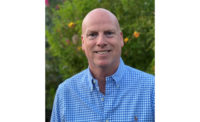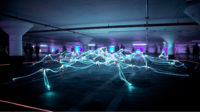Every successful project starts with a framework. A vision statement. A blueprint. The editors of Engineered Systems are proud to present The Blueprint — a monthly Q&A interview with HVACR engineering’s leading voices. These one-on-one discussions will examine the trade’s history, current industry trends, the factors shaping the sector’s future, and more.
The next generation of the indoor experience starts with measurement, followed closely by improving our environments. The customer success team at Airsset, a Vancouver-based software company, is at the forefront of this exciting initiative to improve the world of indoor air quality.
Michael Driedger, CEO, Airsset, discusses how COVID-19 has spawned the digital era of IAQ, the data that matters most, and much more in the latest installment of the Blueprint.
Engineered Systems: Michael, thanks for joining us. Can you please take a moment and introduce yourself and Airsset to those who are tuning in?
Driedger: Airsset is an artificial intelligence (AI)-powered IAQ platform that helps improve human health and performance. We are currently connected to nine IoT devices that give us IAQ data that we turn into insights, indexes, and solutions to improve buildings and the health of the people in those buildings. I’m the CEO and co-founder. The first company I started is a sustainable building consulting firm called Edge Consultants. Airsset was incubated inside of Edge, as was my first software startup, Operto Guest Technologies.
Engineered Systems: The pandemic has certainly raised awareness of indoor air quality. In fact, proper IAQ is now a matter of life and death, correct?
Driedger: It’s really always been a matter of life or death. We’ve been monitoring smoke and carbon monoxide for a long time for life safety reasons (fire and gas leaks). The pandemic has simply made us aware of all the other things in the air that can affect our health. When we started Airsset, it wasn’t because of the health risks but the positive return on investment for business and health when you improve IAQ. The other way to look at the life or death issue with the pandemic has been a very large negative return on investment in ignoring IAQ issues in buildings over the last 50 years.
Engineered Systems: Measuring, monitoring, and diagnosing IAQ is vital. These tasks are more easily accomplished utilizing modern day technology. This supply of technology and the demand for clean air has birthed the “digital era of IAQ.” You recently authored an article on Engineered Systems’ website on the topic — may I encourage those tuning in to check that out. But, for the sake of this conversation, can you share how you define the “digital era of IAQ?”
Driedger: As mentioned, we have been monitoring CO and smoke for a while. This has typically been very analogue. Since this involves life safety, it was easy to just create audible alarms to let people know to head to the door to survive. The digital revolution has really been about the really expensive CO2 and other gas sensors coming down in price with lots of hardware companies popping up with devices that have a full range of sensors on them. Think of it as the evolution from the digital camera (a device that does one thing, like a CO2 monitor), to the smartphone (a device that has a phone, and many other features on it, as well as a camera).
What’s happened over the last three years is that device IAQ standards, like RESET, have allowed for a real focus on very smart digital measurement and clean data processing. It used to be that IAQ data was viewed only as a trigger for a building management system (BMS). Now it’s evolved to be almost as robust and digital as an entire BMS system.
Engineered Systems: What data are facility managers truly seeking in this digital era? What matters most?
Driedger: The universal five are dry bulb temperature, relative humidity, CO2, VOCs, and PM2.5. That’s what RESET puts as its minimum for an IAQ sensor. However, we see lots of sensors now including formaldehyde and PM10 on them. In residential instances, you might also want radon sensors built into a device. At Airsset, we see warehouses very interested in NO2 sensors near the loading docks and welding facilities interested in finer particulates like PM1.
So the answer to this really depends on the facility being managed as to what matters most. It’s the reason we needed to be hardware agnostic, because each hardware provider is trying to meet a different market need. As the software platform on top, we can meet the needs of almost any facility manager but also the teams that support them in keeping things running at optimal levels.
Engineered Systems: One tool rising to the forefront in this digital era of IAQ is demand control ventilation. For the small population out there that isn’t aware of DCV, can you give us a brief synopsis?
Driedger: DCV has been around since the mid-1970s. The simple concept is that it uses a CO2 sensor to determine how many people are in a space (since people breathe out CO2 at a very predictable rate). The HVAC system can then respond by heating up or cooling down outside air to make sure that the people in the space aren’t feeling stuffy air without constantly heating or cooling outside air.
Before that, the easiest way to have decent CO2 levels was to just do a constant volume system of outdoor air, which is super expensive since you are constantly heating or cooling outside air. It was actually conceived as a way to save energy whilst still keeping indoor levels from getting stuffy.
Engineered Systems: Can you further discuss the role occupancy plays when using DCV?
Driedger: The D of demand in DCV was originally conceived as just for the demand of people (literally breathing out CO2). That said, there are lots of other ways to tell if occupancy is affecting IAQ as a single person can have way more effect on IAQ depending on what they are doing. A great example is in a change room. One person can use heavily scented shampoo, conditioner, body wash, underarm deodorant, and perfume in a change room versus another person just having a quick water only rinse off. So, occupancy is just one part of how we should control exhaust or ventilation based on what is happening in a space.
Engineered Systems: While it seems like a slam dunk, there are some design challenges, correct?
Driedger: For sure. Like with anything, it’s not just about the technology you use but how you use it. The mistake most people make is to put CO2 monitors inside of ducts. The big design flaw there is that the CO2 in the duct can be half of what it actually would be in a space as CO2 is a gas that moves very slowly upwards and down a vent. It’s all about the right technology in the right place. No need to use a sledgehammer to drive a finishing nail.
As mentioned earlier, you might also want to use something other than CO2 as your trigger for moving air. Designing for space utilization and programs is key.
Engineered Systems: What other technologies should engineers be aware of in this digital era?
Driedger: All of our existing technologies to create amazing buildings are readily available. I always encourage engineers not to complicate HVAC systems. The simpler, the better when it comes to systems because controls and software can create the learning layer on top of the great tools we already have.
The other advice I can give is to start thinking about devices talking outside of just BACnet protocols. That’s a technology that didn’t really result in the connectivity we all wanted for systems. There is far more promise in system connectivity with cloud-based systems that connect via an open application program interface (API).
Engineered Systems: In addition to minimizing the impact of the pandemic, what other positive impacts does exceptional IAQ have on buildings and their occupants?
Driedger: We named the company Airsset because air is your greatest asset. When you think about the return on investment of improving the energy in a building, it’s only a few pennies per square foot. But most businesses spend hundreds of dollars per square foot on salaries. They forget or don’t understand that no building-related item affects human productivity more than IAQ.
Harvard and many other academic institutions have shown productivity improvements from better IAQ. People also sleep better and therefore have a longer life space when their air quality is better. Even without the pandemic, seasonal allergies or forest fires impact IAQ issues that can affect sick days.
Engineered Systems: We’ve covered a lot in this interview already, but is there anything else you’d like to share with those who are tuning in?
Driedger: It’s going to take all of us to improve IAQ in buildings while simultaneously reducing energy use. Airsset is always looking for new partners. We aren’t a solutions company but a data platform to allow mechanical engineers, industrial hygienists, commissioning engineers, and many others to solve or avoid problems of building performance. Check out our www.airsset.com/partners to learn more.
Engineered Systems: If our audience is interested in connecting with you or Airsset, where should they turn?
Driedger: Our website is www.airsset.com and there are lots of useful resources there for just about anyone. info@airsset.com is probably the best way to get a question answered.





